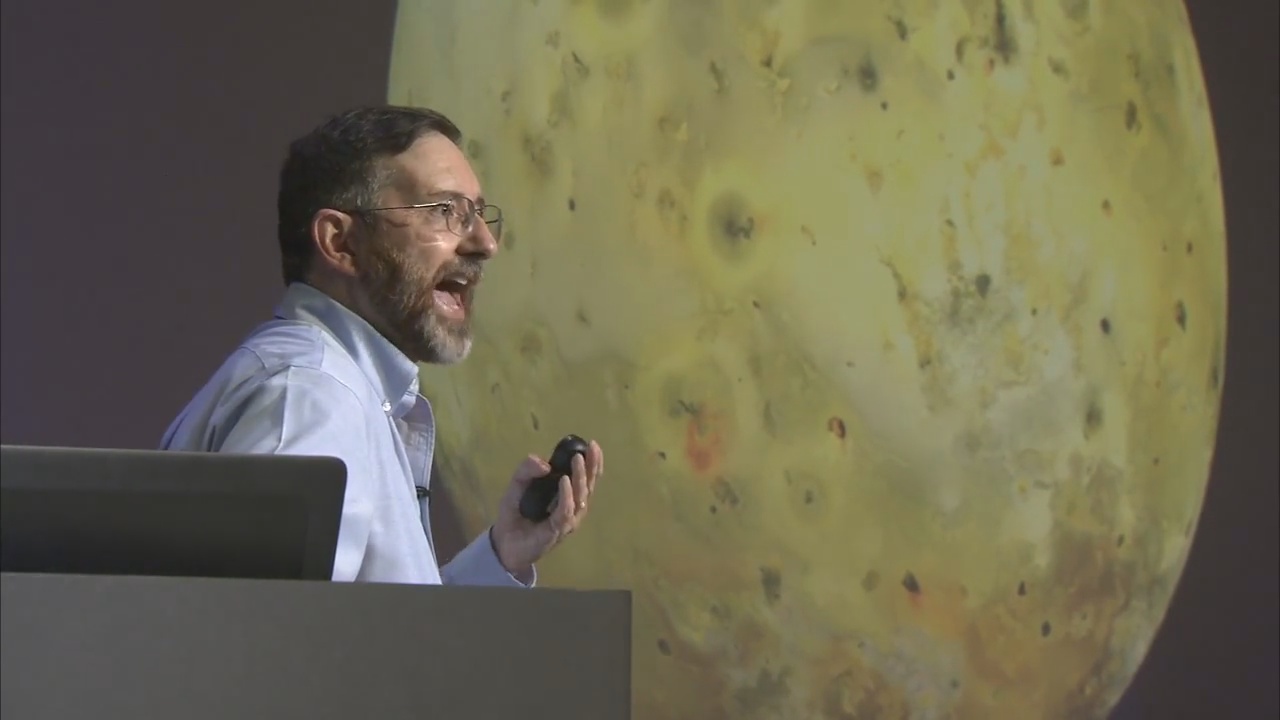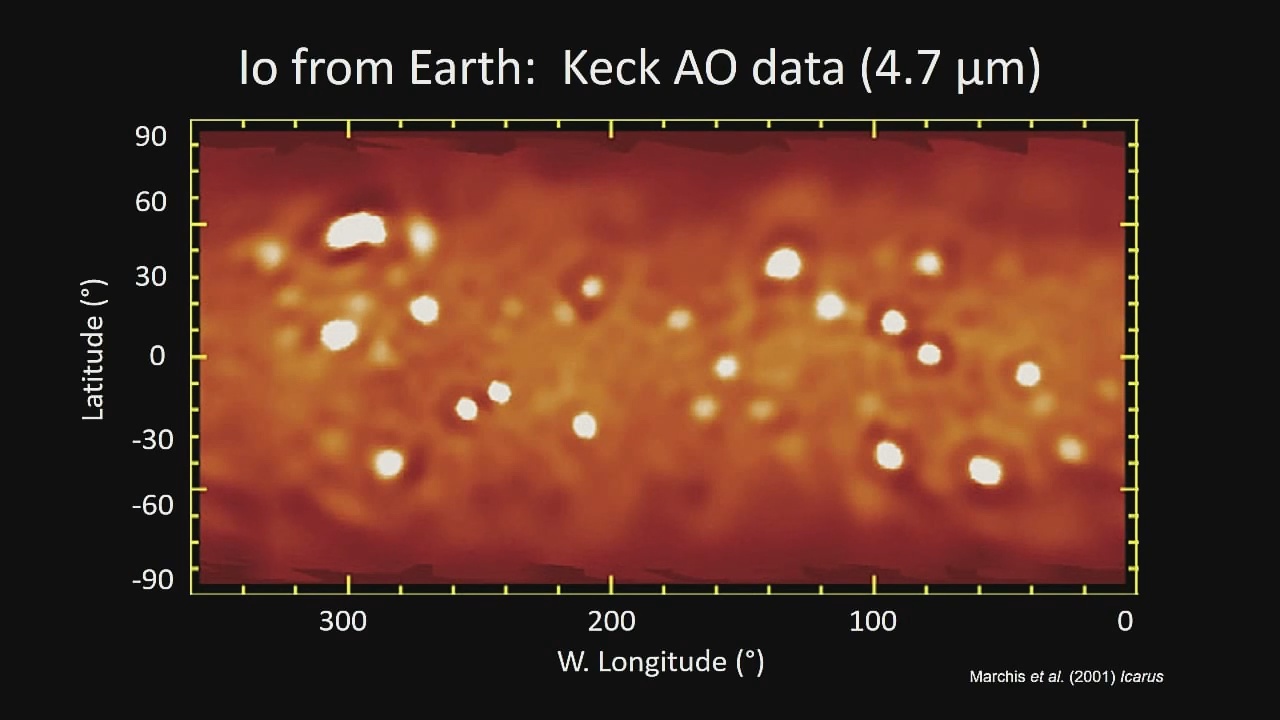
Ashley Davies talks about Io’s volcanoes. (NASA JPL)
(BIVN) – Kilauea is the most active volcano on Earth, but its not even close to being the most active volcano in the solar system.
That distinction goes to Jupiter’s volcanic moon, Io, the subject of a recent talk given by NASA Jet Propulsion Laboratory vulcanologist Ashley Davies.
Davies used studies conducted on Hawaii Island – from the geology of Kilauea to the astronomy on Mauna Kea – to help explain what is known about the Jovian Satellite.
From NASA:
Volcanoes helped to transform the surface of the Earth, the other terrestrial planets, and the Moon. However, the biggest volcanic eruptions in the solar system are taking place not on Earth, but on Io, a moon of Jupiter. Powerful volcanic eruptions result from tidal heating, a process that also affects Jupiter’s ice-covered moon Europa. Despite multiple spacecraft visits and spectacular new observations of Io with large Earth-based telescopes, some of the biggest questions about Io’s volcanism remain unanswered. Getting the answers requires an understanding of the difficulties of remote sensing of volcanic activity; a new, innovative approach to instrument design; and ultimately a return to Io. Ashley Davies, a volcanologist at JPL, will describe how studying volcanoes on Earth leads to a clearer understanding of how Io’s volcanoes work and how best to study them from spacecraft.
As Davies’ presentation shows, the Keck telescopes on Mauna Kea assisted NASA in cataloging all of the active volcanoes on Io.

(NASA JPL)
Lava flows from the Prometheus volcano on Io dwarf those issued from Kilauea’s East Rift Zone at about the same time, according to a direct comparison shown by Davies. The Prometheus flows are also tube-fed lava flows, much like Kilauea’s East Rift Zone flows, including Hawaii Island’s current 61g flow.
Davies also talked about Io’s gargantuan lava lakes, Loki Patera and the familiarly named Pele. Again, the Io lava lakes invite a Hawaiian comparison. In this talk, Davies uses Kilauea’s Kupaianaha lava lake (1986-1990) for context.
Davies also credited the Keck observatory for imaging the fantastic fissure eruptions seen on distant Io.
Here is the full presentation courtesy NASA JPL:
Volcanologist’s Paradise (live public talk) published on Sept. 21, 2017.

by Big Island Video News4:17 pm
on at
STORY SUMMARY
HAWAII ISLAND - Ashley Davies, a volcanologist at NASA's Jet Propulsion Laboratory, compares Hawaii Island's volcano to those found on Jupiter's moon, Io.